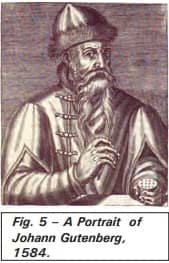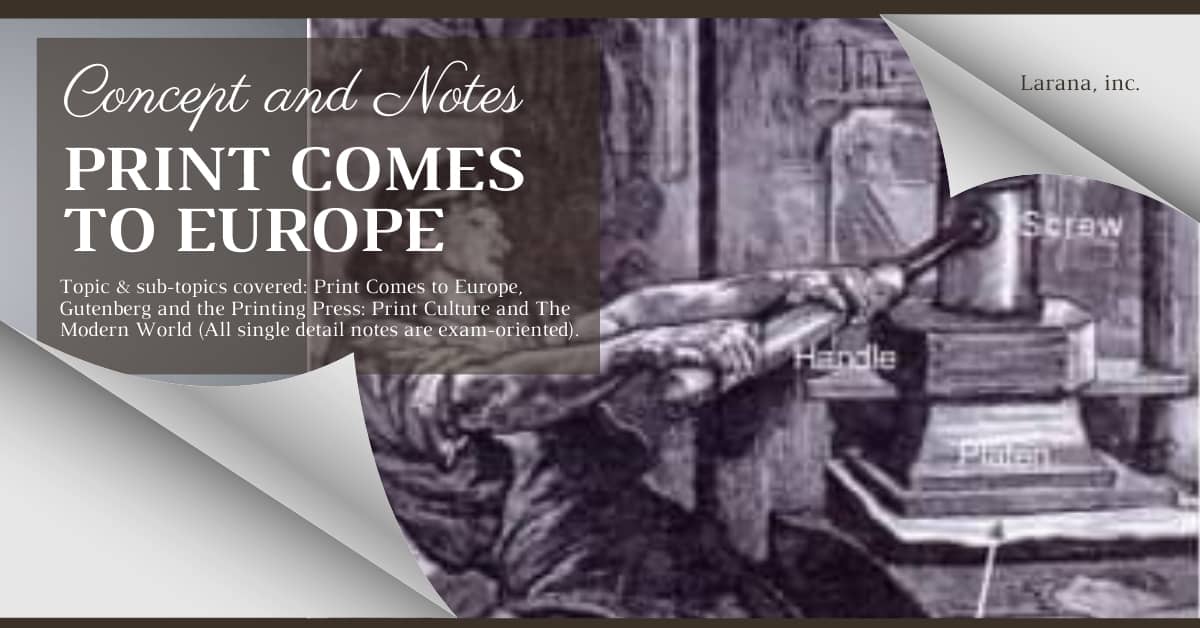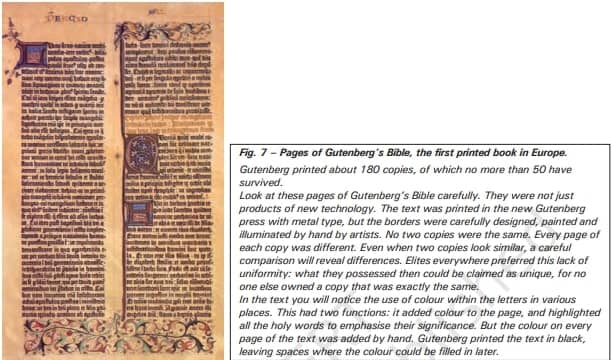NCERT History Class 10 | Print Comes to Europe – Concept and Notes
Topic & sub-topics covered: Print Comes to Europe, Gutenberg and the Printing Press: Print Culture and The Modern World (All single detail notes are exam-oriented).
We have discussed in-depth and exam-oriented pointers that can be asked in the board exam of class 10th about “Print Comes to Europe, Gutenberg and the Printing Press” which is taken from the NCERT History book for class 10th chapter no. 5 “Print Culture and The Modern World“.
Download NCERT History Chapter 5 Class 10th Notes PDF for “Print Culture and The Modern World”
If you are in class 10th and looking for free NCERT History chapter 5 notes of the chapter Print Culture and The Modern World class 10 that cover concepts, then you can download the free class 10th History chapter 5 notes “Print Culture and The Modern World”. You should download this free PDF for future test or exam preparations.
NCERT Class 10 History Chapter 5 Print Culture And The Modern World Class 10th Notes & Concept
Print Comes to Europe

1. Introduction of Chinese Paper in Europe:
- Chinese paper reached Europe via the Silk Route in the 11th century.
- Enabled manuscript production by scribes, enhancing written communication.
2. Impact of Marco Polo’s Return:
- Marco Polo brought woodblock printing knowledge from China to Italy in 1295.
- Italians began producing books with woodblocks, leading to the spread of printing technology in Europe.
3. Shift Towards Printing Technology:
- Initially, luxury editions were handwritten, while cheaper printed copies gained popularity among merchants and students.
- Demand for books increased, leading to the organization of book production and the rise of booksellers.
4. Expansion of Book Trade:
- Booksellers across Europe began exporting books to various countries.
- Book fairs became common, facilitating the exchange of books and ideas.
5. Challenges of Manuscript Production:
- Handwritten manuscripts were expensive, labour-intensive, and fragile, limiting their circulation.
- Copying manuscripts was time-consuming, leading to the search for quicker reproduction methods.
6. Emergence of Woodblock Printing:
- Woodblocks were widely used in Europe by the early 15th century for printing textiles, playing cards, and religious pictures with simple texts.
7. Invention of Printing Press:
- Johann Gutenberg developed the first-known printing press in the 1430s in Strasbourg, Germany.
- Signalled a significant breakthrough in print technology, paving the way for mass production of texts.
Gutenberg and the Printing Press




